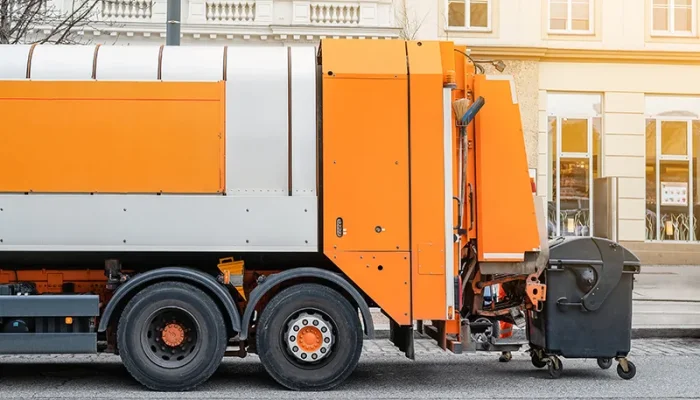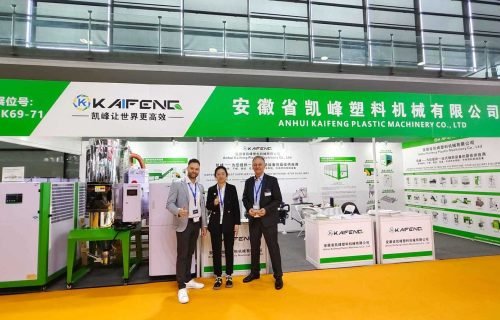ゴム・複合材製造
開封は、プラスチック周辺機械の研究開発、製造、販売を統合した専門のプラスチック機械メーカーです。
コア要件
1. Material Performance Consistency
Precise control over raw material properties is non-negotiable. Rubber compounds demand exact polymer-filler-additive ratios for consistent elasticity, tear strength, and aging resistance. Composites require repeatable fiber-resin interfaces to guarantee mechanical properties like tensile strength and impact resistance. Batch-to-batch uniformity directly impacts product safety in critical applications (e.g., tires, aerospace components).
2. Process Parameter Accuracy
Strict adherence to thermal and mechanical parameters defines product integrity. Rubber vulcanization requires exact temperature (±1°C) and time control to achieve optimal cross-linking. Composite curing cycles demand precise temperature ramps and pressure profiles to prevent voids or delamination. Real-time monitoring systems are essential to maintain these tolerances throughout production runs.
3. Environmental Control Rigor
Moisture and contamination management is critical. Hygroscopic materials (e.g., silica-filled rubber, nylon reinforcements) require dew points below -40°C during processing to prevent steam voids or hydrolysis. Cleanrooms or enclosed systems prevent airborne contaminants from compromising adhesive bonds in composites or causing rubber surface defects.
4. Sustainable Manufacturing Practices
Resource efficiency and waste reduction drive operational viability. Energy recovery from exothermic reactions (e.g., rubber curing), closed-loop water cooling systems, and regrind utilization (≥30% in non-critical composites) reduce costs while meeting ESG targets. Low-VOC formulations and solvent-free processes address emissions regulations.
ペイン・ポイント

Automation Integration Barriers
Automation Integration Barriers
Reinforcement layup and rubber profile extrusion resist full automation. Manual composite ply placement achieves <60% repeatability. Variable rubber elasticity causes die swell inaccuracies during extrusion. Retrofitting legacy equipment with IoT sensors faces compatibility hurdles.

Regulatory Compliance Burdens
Evolving standards (REACH, EPA VOC limits) demand constant reformulation. Rubber accelerators like MBT face usage restrictions, requiring alternative curing systems. Composite emissions (styrene, acetone) necessitate costly capture systems. Documentation for aerospace/medical certification adds 20–35% overhead.

Material Inconsistency & Supply Variability
Raw polymer batches (natural rubber, resins) exhibit property fluctuations due to source variations. Fillers like carbon black or silica require rigorous dispersion control to prevent agglomeration. Composite reinforcements (e.g., glass/carbon fibers) may suffer from inconsistent sizing treatments, compromising resin adhesion. These inconsistencies force costly reprocessing and quality deviations.

Thermal Management Challenges
Precise exothermic reaction control remains problematic. Rubber vulcanization generates uneven heat distribution, causing under-cured cores or surface scorching. Composite curing demands exact temperature gradients; deviations exceeding ±3°C trigger resin shrinkage or delamination. Cooling large molds efficiently adds energy intensity and cycle time penalties.
プラスチック加工ソリューション
ソリューションの概要
Plastic machine utilises efficient thermal management technologies, such as dual-function temperature control and heat recovery systems, to achieve energy-efficient heating and cooling processes. Real-time monitoring and programmable controllers ensure the accuracy and stability of the production process, while automated operating procedures reduce human intervention and improve production efficiency.

ソリューションの詳細
Optimized Thermal Management
Dual-function temperature control enables seamless heating/cooling transitions in mold temperature controllers. Heat recovery systems in dehumidifiers repurpose thermal energy, reducing net energy consumption during material processing.
Stabilized Process Control
Real-time monitoring and programmable controllers maintain precise parameters (temperature, humidity, mixing ratios). Self-diagnostic systems automatically detect anomalies in critical operations to prevent deviations.
Automated operating procedures
Pre-set programs for plastic machines automate material metering and humidity control. Remote monitoring enables centralised control of equipment, while visual displays and alarm systems minimise human intervention.
Customised production scale expansion
The modular design of plastic machines adapts to different scales (from R&D to large-scale production). Configurable parameters support customised processes such as rubber vulcanisation. Customised engineering design ensures seamless integration of workflows.
リサイクルと廃棄物処理における利点

グローバルなサービスと顧客からの強い支持
グローバルなサービスと顧客の強い支持 当社の機器は、ヨーロッパ、アメリカ大陸、アフリカ、東南アジアの20以上の国と地域に輸出されています。世界中に500社以上の法人顧客を持ち、85%の再購入率を誇る当社は、強固なグローバルネットワークと業界からの信頼を得ています。

幅広い用途
幅広い用途 当社の製品とソリューションは、プラスチック加工、リサイクル、廃棄物管理、化学・製薬製造、食品・飲料製造、HVAC・冷蔵、ゴム・複合材製造など、さまざまな産業で幅広く応用されており、その優れた適応性を実証しています。

幅広い業界をカバー
熱交換、冷熱交換、粉砕・リサイクル、混合・吐出、除湿・乾燥、供給・搬送システムなど、幅広い製品ラインナップを取り揃えています。当社の幅広い製品群は、様々な生産段階の要求に応えるように設計されています。

安定した品質と長寿命
ISO9001国際品質管理システムの下で、硬化合金ブレードや銅コアモーターなどの高品質材料を使用しています。高度な検査装置と組み合わせることで、安定した性能を確保し、装置の寿命を最大50%まで延長します。

競争力のある価格と柔軟なカスタマイズ
競争力のある価格と柔軟なカスタマイズ 価値に重点を置く当社の製品は、品質を損なうことなく、同クラスの機器よりも10%-15%低い価格設定となっています。お客様に合わせたカスタマイズ、柔軟な支払いオプション、長期保証を提供し、投資収益率を最大化します。

高度な研究開発と技術的専門知識
先進的な研究開発と技術専門知識 当社は、近代的な生産ラインと高度な試験システムを備えた専用の研究開発センターと技術部門を運営しています。当社の経験豊富なエンジニアは、常に製品の性能を向上させ、市場の需要に合わせた新しいソリューションを開発しています。
加工可能なプラスチックの種類
PP
PP
PVC
PVC
PE
PE
PC
PC
追記
追記
PET
PET
カスタマイズされたソリューション
私たちは、お客様との長期ビジネスを確立されています。私達のプロダクトの何れかのモデルに興味がある場合は、お問い合わせは、自由にしてくださいを参照してください。
お問い合わせ
よくあるご質問
How does your plastic machine ensure consistent rubber compound mixing?
Our mixing systems provide precise control of filler ratios and uniform dispersion – critical for achieving the required mechanical properties in rubber products. The automated dosing maintains batch-to-batch consistency for quality vulcanization.
What temperature control capabilities support composite curing processes?
Our temperature management systems deliver stable heating profiles essential for proper resin curing in composites. The equipment maintains tight temperature tolerances during the entire molding cycle.
How does your drying equipment handle moisture-sensitive composite materials?
The dehumidification systems effectively prepare hygroscopic composite reinforcements by reducing moisture content to optimal levels before molding operations.
Can your plastic machine process recycled rubber/composite materials?
Our size plastic machine is designed to handle post-industrial rubber and composite waste, producing consistent regrind material suitable for reuse in manufacturing processes.
What features ensure safe processing of rubber/composite formulations?
The equipment incorporates necessary safeguards for handling various rubber compounds and composite resins, including proper ventilation and material containment features.

第13回中国国際飲料工業技術博覧会...
KAIFENGプラスチック機械は、プラスチック補助機器、工業用温度制御機器の一つとして、プロの製造、製造、販売、サービスです。 工業用温度制御...

プラスチックミキサーによくある問題の分析と解決法 ...
プラスチックミキサーは、日常使用中にいくつかの一般的な問題が発生する可能性があります。安徽開豊塑料機械有限公司は、長年の業界経験により、これらの問題の原因を分析し、...

CBST 2025 上海開封機械のワンストップオートメーション...
2025年3月5~7日、第13回中国国際飲料工業科学技術展覧会(CBST-2025)が上海新国際博覧センターN1~N3ホールで盛大に開幕する。


